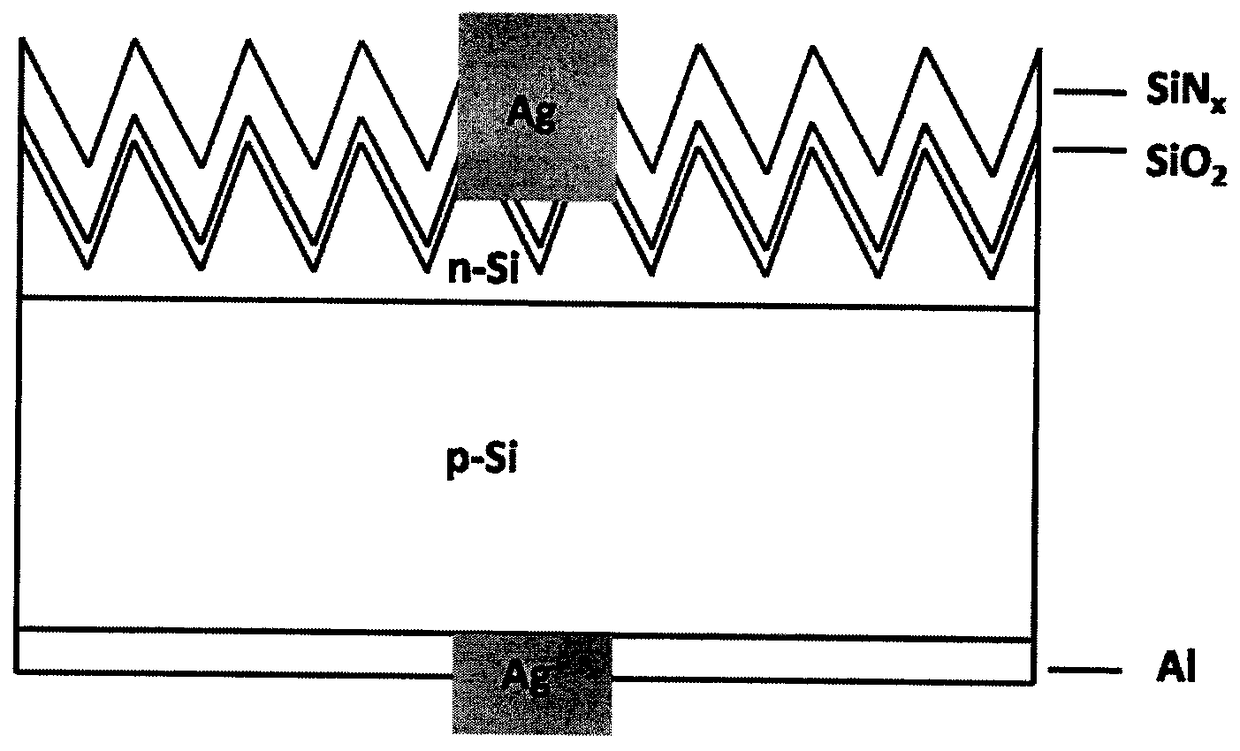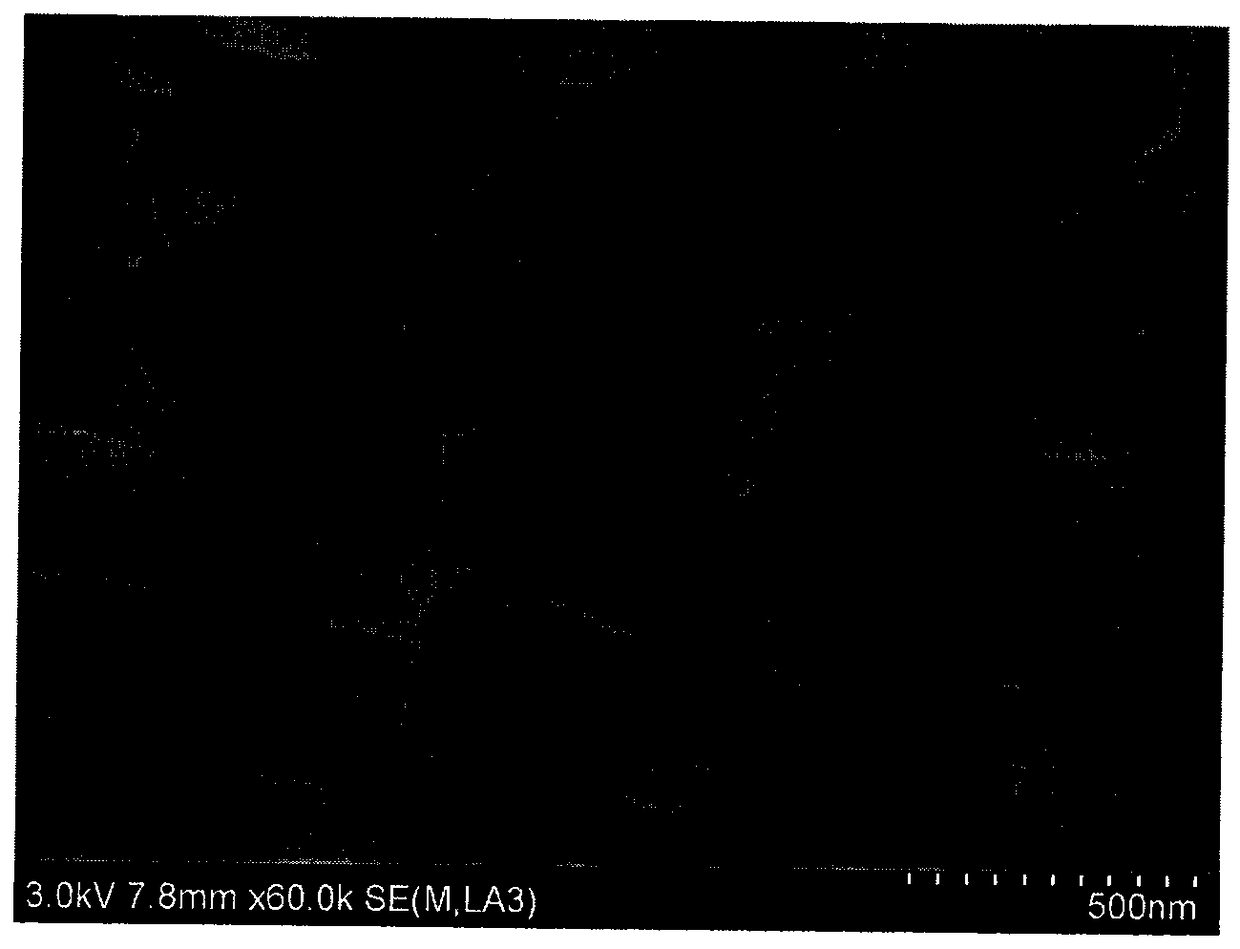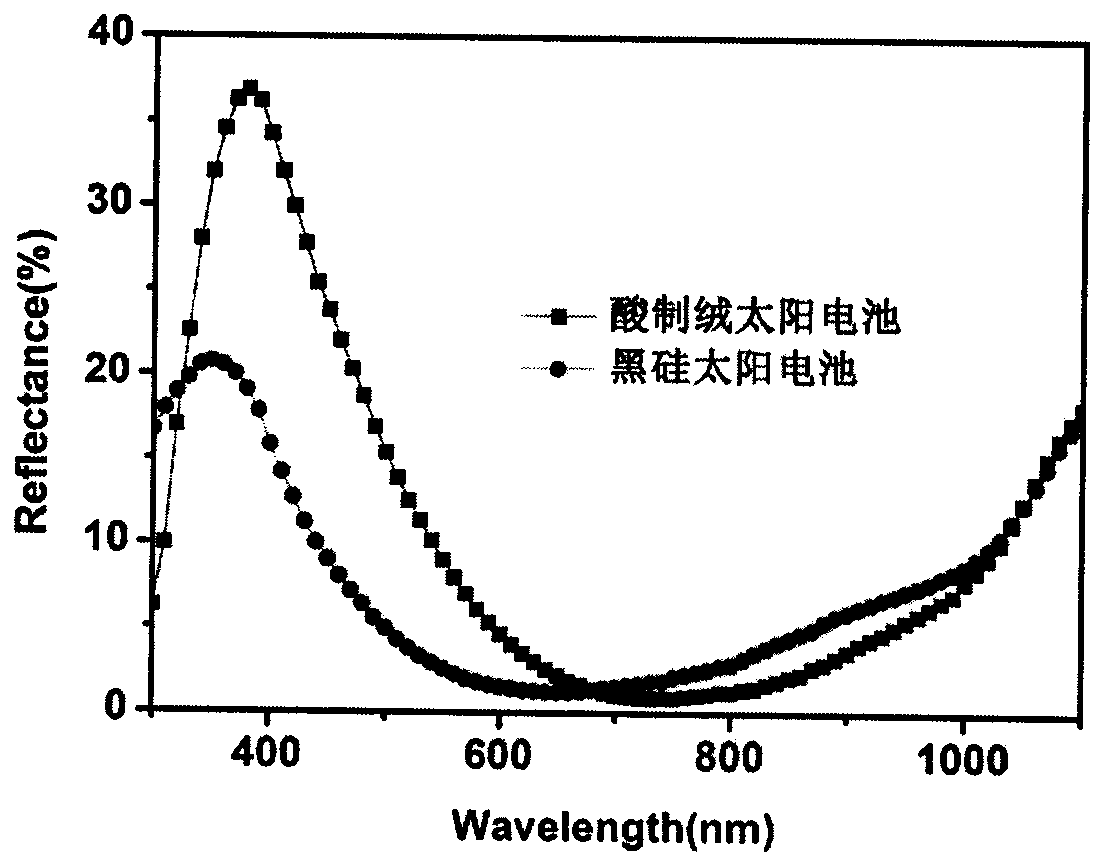A kind of preparation method of polycrystalline solar cell based on solution method
A technology of solar cell and solution method, applied in nanotechnology, circuit, photovoltaic power generation, etc. for materials and surface science, can solve the problem of low conversion efficiency of black silicon cells, achieve low reflectivity, high conversion efficiency, temperature low effect
- Summary
- Abstract
- Description
- Claims
- Application Information
AI Technical Summary
Problems solved by technology
Method used
Image
Examples
preparation example Construction
[0026] In order to control the preparation cost of black silicon and improve the conversion efficiency of black silicon cells, an embodiment of the present invention provides a method for preparing polycrystalline solar cells based on a solution method, including:
[0027] (1) cleaning the surface of the silicon wafer;
[0028] (2) Deposit silver nanoparticles on the surface of the silicon wafer, and catalyze and corrode the black silicon nanoporous structure;
[0029] (3) Cleaning the prepared black silicon with NSR and hydrogen peroxide solution to form an inverted pyramid anti-reflection structure on the surface of the silicon wafer;
[0030] (4) After cleaning before diffusion, diffusion is performed in a diffusion furnace to form a PN junction;
[0031] (5) Then wet etching process is used to etch the back junction and edge junction of the diffused silicon wafer, and remove the surface phosphosilicate glass and the diffusion dead layer;
[0032] (6) The silicon oxide in...
Embodiment 1
[0038] (1) In the volume ratio HF (40%): HNO 3 (70%): H 2 Etching was carried out in a solution of O=1:3:2, the time was 3 min, and the temperature was room temperature. The concentration of NaOH solution used to remove the porous silicon is 1%, the time is 30 s, and the temperature is room temperature.
[0039] (2) Deposit a layer of silver nanoparticles on the surface of the silicon wafer by immersing in the solution, 0.002M AgNO 3 +4M HF, response time 50s;
[0040] (3) Immerse the silicon wafer deposited with silver nanoparticles in the solution for corrosion, 0.3M H 2 o 2 +1.5M HF to get the nanoporous structure, the reaction time is 180s. ;
[0041] (4) immerse the etched black silicon wafer in the solution for cleaning, remove residual silver nanoparticles, H 2 o 2 : NH 4 OH=1:3, the reaction time is 180s;
[0042] (5) Immersing the prepared black silicon into the solution for etching to prepare an inverted pyramid black silicon structure. Utilizing the aniso...
Embodiment 2
[0045] Prepare a solar cell with the structure described in Example 1:
[0046] Pre-cleaned in HCl and HF solutions, the N-type emitter in the PN junction is made of POCl 3 It is obtained by diffusion, the diffusion temperature is 825°C, and the rear resistance of diffusion is 70Ω / sq; the wet etching process mainly uses HF and HNO 3 solution to etch the back junction and edge junction, and then use dilute HF solution to remove the surface phosphosilicate glass; in HNO 3 (69%): H 2 O=1:3 solution in a water bath for 30 minutes at a temperature of 80°C to prepare a very thin inner layer of silicon oxide passivation layer; then PECVD deposited 85nm SiN x , deposited onto the black silicon emitter surface. When screen-printing electrodes, the back side is made of aluminum paste, and the front and back grid electrodes are made of silver paste. Finally, a rapid heat treatment is carried out in a chain sintering furnace.
[0047] The result of the embodiment: compared with the c...
PUM
| Property | Measurement | Unit |
|---|---|---|
| pore size | aaaaa | aaaaa |
| electrical resistivity | aaaaa | aaaaa |
| thickness | aaaaa | aaaaa |
Abstract
Description
Claims
Application Information
 Login to View More
Login to View More - R&D Engineer
- R&D Manager
- IP Professional
- Industry Leading Data Capabilities
- Powerful AI technology
- Patent DNA Extraction
Browse by: Latest US Patents, China's latest patents, Technical Efficacy Thesaurus, Application Domain, Technology Topic, Popular Technical Reports.
© 2024 PatSnap. All rights reserved.Legal|Privacy policy|Modern Slavery Act Transparency Statement|Sitemap|About US| Contact US: help@patsnap.com










